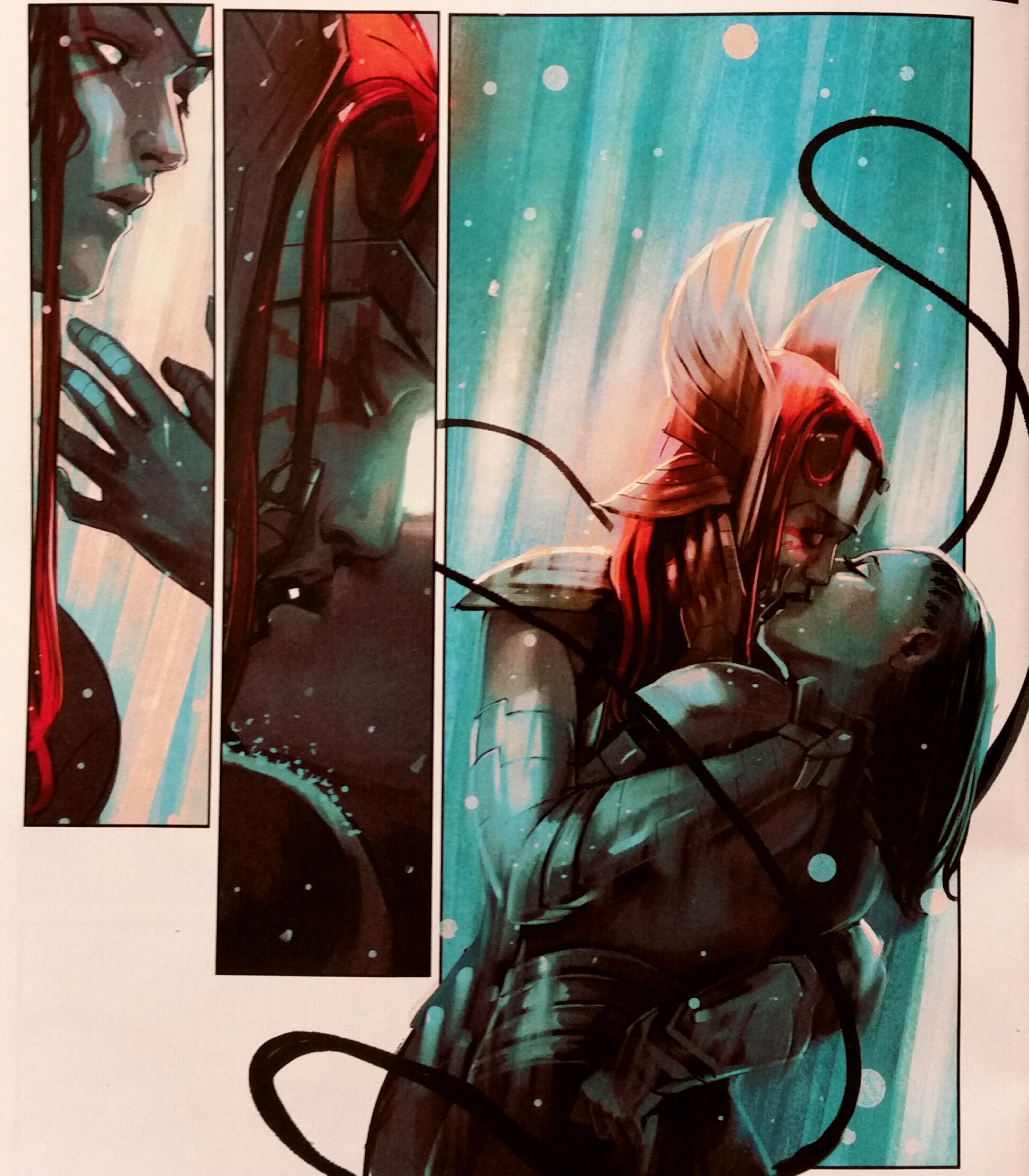Angela, Queen of Hel #1
Published: 10/28/2015
Written by: Margueritte Bennet
Art by: Kim Jacinto, Stephanie Hans, and Izrael Silva
With the onslaught of number one issues from Marvel, I’ve had ample opportunity to explore the all new Marvel universe. This week I gazed into the hellish abyss that was “Angela, Queen of Hel” #1—I’m not being figurative here, Angela waltzes through Hell. And Angela being the assassin angel she is, fights plenty of monsters that she chops, dices, and skewers to bits in her search for her long lost love, Sera.
I want to get something out of the way from the very start. Do I like this book? Short story… hmmm, yeah. Long story—why the shit would you start the book when Angela takes over Hell? And then flashback to her taking over Hell? Gee thanks guys, now I don’t have to buy the first arc because not only do I know Angela and Sera survive, but they win! Every time now I see Angela stand off against a monster or Sera’s life become imperiled I can simply flip to the first God Damn page and see Angela and Sera sitting on the throne to Hell. I’m not even spoiling anything, technically the book spoiled itself. If you are going to flash forward in time, make sure not revealing what all the tension hinges on.
Okay, rant over—but that’s a serious setback to try and come back from, even with the impressive artwork on display in this book. See there’s a fun trick being employed in the panels. Not only are the panels themselves dynamic and exciting but the artwork is actually stylized differently in order to depict differing time periods. See, back a long, long time ago, Marvel had “Secret Wars”—that’s right, four months ago. And one of the crossover books was “1602” which featured Angela and Sera prominently. Also? Everybody loved the art style, the color saturation, the soft line art—it all seemed like a fairy tale, which was kind of the point. So they took that art style to depict the past. So what art style did they choose for current depictions? It’s this weird amalgamation of Rob Liefield and Angela from when she was a Spawn character. Does this sound awful? Yes, yes it does. But it works to show a Hell that is harsh and fights that are brutal. But art isn’t the only thing this book has going for it. The words are lots of fun too.
Got to hand it to Marguerite Bennett, she walked a fine line between imposing and commanding dialogue and witty banter. The exchanges between Sera and Angela are adorable and lend credence that Angela would brave the depths of Hel to get her back. Honestly, this book could have been content to simply be a big monster fight book. But instead, the character development helped lend relevance to a long term story arc. Though keep in mind that a lot of that falls by the way side when you remember they spoiled the shitting ending so you know, grain of salt and all that. But regardless of how the story plays out, at least the progression will be entertaining.
So the story of “Angela, Queen of Hel” is Angela going to Hel in order to save her loved one and ending up the liege of the kingdom. Who wants to guess what “Invincible” story I’m going to compare it to? That’s right, Monster Girl and Robot travel to the Flaxan world. The whole trip started when Robot calculated that he could stop future invasions by the Flaxans if he traveled to their universe and disabled them. He did this with the best of intentions but ended up trapping himself and his love, Monster Girl, in forced slavery. So you know, just a minor error and the two of them spent a century as slaves to a warring empire—a century, yeah, their aging slowed and they had to be slaves for a long ass time. But they both endured and at the tail end of their stay they deposed the warlord government through a slave insurrection. What’s all the point of this? Well, Robot originally did all of this for the best reasons and it cost not only him but the person closest to him. And when he came out of it he was so irreparably damaged that he was hardly a human being anymore. His cruelty fermented until he himself became an evil dictator. So now we have to ask, was the cost worth the sacrifice? Is that something Angela will have to contend with when she rules Hell—because she totally does.




